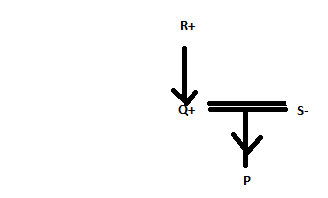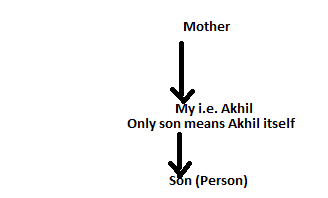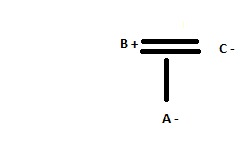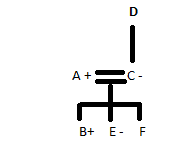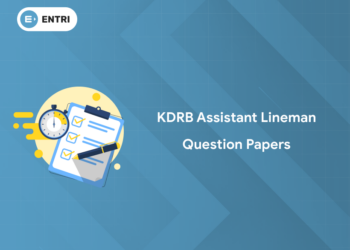Blood Relation related questions are one of the sure-shot questions in the Reasoning part. Every banking related exams and other government competitive exams include this topic. Usually, we can expect 1-5 questions from this topic. These analytical questions without any mathematical operations to check the understanding of various blood relations. So, keeping all these in mind, we are providing the PDF questions for Blood Relation topics, along with some solved examples.
Download Entri and start practicing the mock tests for Banking Exams.
Blood Relation
Check the basic concepts, question types, and some tips to solve the questions. Generally, we can find three types of questions-pointed/dialogue type, short puzzles, and symbolically coded questions.
- Pointed or dialogue type question, candidates have to find the relation of persons in the question, from the relationships between other persons given in the question.
- Puzzles may be twisting and a little bit confusing, or sometimes easy ones connecting a large number of people. Candidates can draw relations and easily find the answer.
- Symbolically coded blood relation questions will have certain codes for each relation. Firstly, we have to find relations, then make a diagram and answer the question.
Download and practice questions on Syllogism.
Representation of Relations-Family Tree Method
Hierarchy based on seven generations in blood relations questions is:
| Generation | Male | Female |
| Three generations above↑↑↑ | Great grandfather Maternal great grandfather Great grandfather-in-law | Great grandmother Maternal great grandmother Great grandmother-in-law |
| Two generations above ↑↑ | Grandfather Maternal grandfather Grandfather-in-law | Grandmother Maternal grandmother Grandmother-in-law |
| One generation above ↑ | Father, Uncle, Maternal uncle, Father-in-law | Mother, Aunt Maternal aunt, Mother-in-law |
| The current generation (Self) → | Husband, Brother Cousin, Brother-in-law | Wife, Sister Cousin, Sister-in-law |
| One generation below ↓ | Son Nephew Son-in-law | Daughter Niece Daughter-in-law |
| Two generations below ↓↓ | Grandson Grandson-in-law | Granddaughter Grand daughter-in-law |
| Three generations below ↓↓↓ | Great-grandson Great grandson-in-law | Great-granddaughter Great granddaughter-in-law |
Practice Distance and Direction questions.
Family Tree
It is easier to analyze the question if represented the given data as a tree. Candidate should know relations clearly.
| Relation | Person | Relation | Person |
| Father of grandfather or grandmother | Great grandfather | Daughter of father or mother | Sister |
| Mother of grandfather or grandmother | Great grandmother | Son of the second wife of the father | Stepbrother |
| Father of father or mother | Grandfather | Daughter of the second wife of the father | Stepsister |
| Mother of father or mother | Grandmother | Son/daughter of uncle/aunt | Cousin |
| Wife of grandfather | Grandmother | Brother of husband or wife | Brother-in-law |
| Husband of grandmother | Grandfather | Sister of husband or wife | Sister-in-law |
| Father-in-law of father/mother | Grandfather | Husband of sister/sister-in-law | Brother-in-law |
| Mother-in-law of father/mother | Grandmother | Son of father | Oneself/Brother |
| Father’s father/mother only | Father | Mother of son/daughter | Oneself/Wife |
| Only daughter-in-law of father’s father/father’s mother | Mother | Father of daughter/son | Oneself/husband |
| Husband of mother | Father | Son of the son of grandmother/grandfather | Brother/Oneself /Cousin |
| Wife of father | Mother | Daughter of the son of grandmother/grandfather | Cousin/Oneself /Sister |
| Second wife of the father | Stepmother | Son of brother or sister | Nephew |
| Brother of father | Uncle | Daughter of brother/sister | Niece |
| Brother of mother | Maternal Uncle | Grandson of father/mother | Son/Nephew |
| Sister of father | Aunt | Granddaughter of father/mother | Daughter or Niece |
| Sister of mother | Maternal Aunt | Husband of daughter | Son-in-law |
| Husband of aunt | Uncle | Wife of brother/brother-in-law | Sister-in-law |
| Wife of uncle | Aunt | Wife of son | Daughter-in-law |
| Son of grandfather/grandmother | Father/Uncle | Son of Son/Daughter | Grandson |
| Daughter of father-in-law/mother-in-law of father | Mother/Aunt | Daughter of son/Daughter | Granddaughter |
| Father of wife/husband | Father-in-law | Son’s/Daughter’s grandson | Great Grandson |
| Mother of wife/husband | Mother-in-law | Son’s/Daughter’s granddaughter | Great-granddaughter |
| Children of the same parents | Siblings | Father’s/Mother’s only son/daughter | Oneself |
| Son of father or mother | Brother |
Number Series-Free mock test PDF and Tricks to improve accuracy!
Worked out Examples:
Dialogue or pointed:
1. If P’s the father is Q, R is the father of Q and S is P’s mother, how is R related to S?
Solution: Father-in-law.
We can represent males by + and females by -, siblings by —, and married relations by =, next-generation by a |. Also don’t guess the gender, if it is not specified in the question, leave it for cannot be determined.
2. Pointing to a photograph of a person, Mr.Akhil said, “He is the son of the only son of my mother.” How is Mr. Akhil related to that person?
Solution: Father. This is again a pointing type question. Let us check,
Practice more subject-wise quizzes to improve your scores.
Coded Pattern.
3. If P+Q means P is the daughter of Q; P-Q means P is the husband of Q; P*Q means P is the brother of Q.
If A+B-C, which of the following is true?
a) C is the mother of A
b) C is the sister in law of A
c) Cannot be determined
d) C is the aunt of A
Solution: (a).
Puzzle Type
4. A is the father of B. B is the only son of C. C is the daughter of D. C is the mother of E. E is the sister of F. Then how is F related to A?
a) Daughter
b) Father
c) Mother
d) Cannot be determined
e) Son
Solution: Daughter.
Even though the gender of F is not specified, it is given that B is the “only son” of C. So, F will be the daughter of A.
English Language-Descriptive paper and Reading Comprehension.
Now, practice more questions on topic-Blood Relations. Download free PDF.
Mock tests and revisions are an inevitable part! So, don’t skip both. Practice topic-wise short quizzes on various topics of Reasoning for the new patterns of questions and previous year questions.




